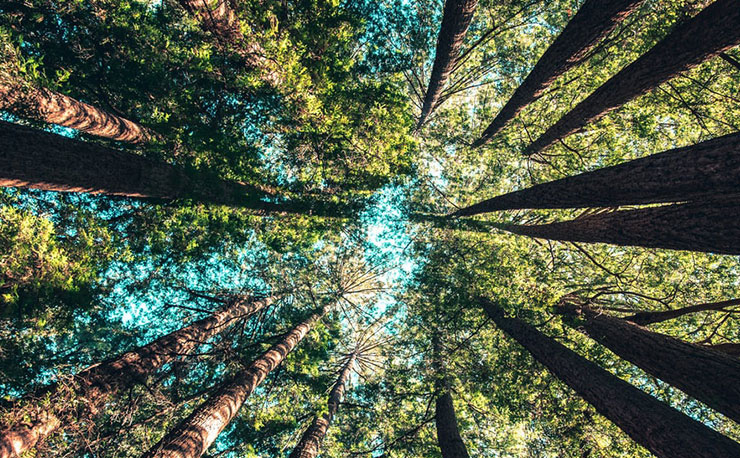
Forest bathing is an easy self-care practice that helps you reduce your stress levels by connecting you to nature
—
From our inescapable smartphones to the constant go-go-go of today’s busy world, more and more people are feeling disconnected from their own lives and the world around them. For some, a practice known as forest bathing is the key to restoring both their sense of self and their understanding of their place in the world. This easy self-care routine requires nothing more than you and the ability to get to your nearest wild space to help you find the holistic balance you’ve been missing out on.
A Japanese Practice with Universal Roots
The term ‘forest bathing’ comes from the Japanese name for the practice, Shinrin-Yoku— which translates to ‘forest bath’. Developed in the 1990s to combat the increasing stress of industrial living, the practice of forest bathing centers around the idea of returning to nature to combat stress, ground yourself, and reconnect with the natural world around you. This practice of finding mindfulness through nature, however, extends beyond walking through the gardens of Japan. You can take the vestiges of this therapeutic practice and apply it to any wild space around you, from wildlife preserves to botanical gardens, and even city parks.
Nature Therapy
Returning to the forest or green spaces may be nothing new, but in a time when so many people are moving to cities, this is a much-needed reminder of how beneficial organic and natural spaces can be. Just as many are seeking wellness from organic ethnobotanicals found in forests and jungles rather than taking prescription pills to ease ailments, people are ‘returning to the earth’ and getting out of urban spaces.
Real Health Benefits
While some may be tempted to write off forest bathing as the latest new-age fad, the facts are that the history of our National Parks and wild spaces were created by people who understood the fundamental benefits of nature.
As science has sought to explain the human condition, it has only confirmed that the practice of returning to nature has numerous positive effects on our health and wellness. Researchers in one 2011 study found that those who took a forest walk, rather than a walk through the city, experienced significant reductions in their blood pressure and stress hormones. While another study found that the smell of trees (particularly cedar oil) had a calming, sedative effect on walkers.
Getting Ready for the Wild
If you don’t get outdoors regularly, there is some preparation needed before you begin your first excursion. Begin by picking a location, as this will affect the number of preparations you need to make. Our nation is filled with both state and National Parks that offer access to nearly untouched nature. Wildlife refuges offer an even ‘wilder’ experience where you may be able to view regionally-based wildlife from afar. If these destinations prove too far away for you, your local city parks could offer the perfect nature getaway.
Shy away from the neighborhood playground-style areas; instead, try looking for areas with trees and a hiking trail where you can truly immerse yourself in the depths of nature. If you’re a true born and bred metropolitan, a journey through the wilds of a National Park may be too overwhelming. If so, choose an area where you can feel comfortable and confident in order to get the most out of your experience.
Bathing in the Green
One of the most important aspects of forest bathing is the willingness to turn your phone off while you walk. The point of forest bathing is to eliminate the overwhelming technological distractions of the modern world in order to increase your comfort within nature. While you may want to carry your phone in case of emergencies, challenge yourself to disconnect and spend this time focusing on your breathing while enjoying the sights, sounds, and smells of nature!
There is no wrong way to forest bathe — this is your chance to connect not just with nature, but with yourself. Do what you can to leave your time in nature feeling uplifted, fulfilled, and reconnected with yourself and the world around you.
You may also enjoy reading Tips to Make Your Workout Eco-Friendly by Ian Lewis